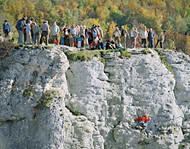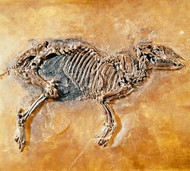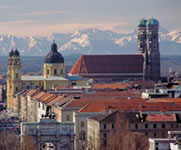
The Swabian Alb - a striking highland region that rose up out of the Jurassic sea millions of years ago - features a combination of bizarre rock formations and gently rolling slopes, is around 220 km long and 50 km wide, and runs right across Baden-Württemberg, from the west of Lake Constance up into the Nördlinger Ries. In prehistoric times, lava spewed from volcanoes here and there was even a visitor from space: a huge meteorite crashed into the earth creating the Nördlinger Ries and Steinheimer Becken craters.
Today, the region is a popular place to visit. The landscape is full of majestic castles and romantic churches looking out far across the plateaus. One of the finest examples is Balthasar Neumann's last work, the abbey church in Neresheim. The Swabian Alb consists of broad plains, light deciduous forests and sparse juniper scrubs as well as mysterious caves with fantastic underground systems and mountains from the top of which you can enjoy views of the Black Forest and even the Alps on a clear day.

The region is a remarkable blend of old-established towns and sleepy villages, impressive scenery and recreation areas, historical and geological attractions. The highest point in the east, the Ipf reaches 668 metres, while Mount Lehmberg in the west is 1,015 metres high. Coming from the north, the Swabian Alb looks like a rugged wall, while from the south it runs almost imperceptibly into the foothills of the Alps.
Where the sheep now graze peacefully among the juniper bushes, glowing molten rock once bubbled up into the sky millions of years ago; the Swabian Alb was once one of the most volcanic regions on earth. With its many naturally occurring geological features and phenomena, this interesting landscape is a unique natural geology park. You can still find rare prehistoric fossils in the area today.







